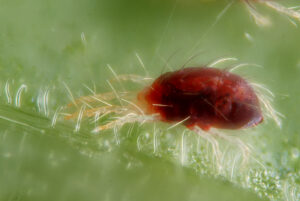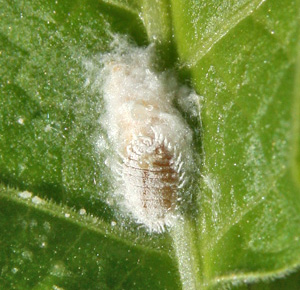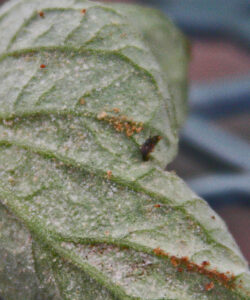
Female red spider mite.

Mealybug and nest.
Spider mites and mealybugs tend to plague mirlitons that are planted in containers, especially when kept indoors during overwintering.
You can manage mealybugs by soaking a cotton swab with 70% isopropyl rubbing alcohol and dabbing it directly on the bugs. Alternatively, you can dilute the alcohol with water at a 1:10 ratio (one part alcohol to 10 parts water) and spray it on both the top and bottom of the leaves. (Sevin claims to control mealybugs, but there’s evidence that it is not as effective as alcohol.)
Mites can be controlled with the same alcohol spray, neem oil, or insecticidal soap (follow the instructions on the label).
Sprays will only kill the living mites, so you may need to repeat the spraying process weekly for a few weeks.

Red spider mite clusters.
Click here for a short fact sheet on how to identify signs of mites.
Click here for a fact sheet on mealybugs.